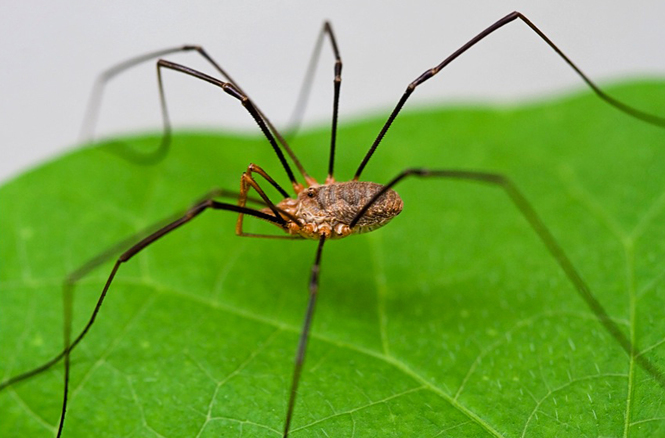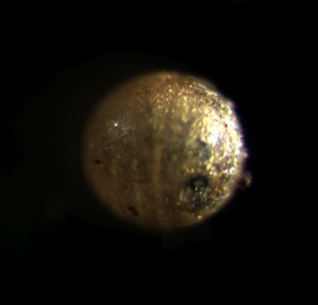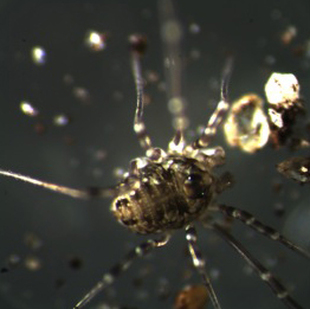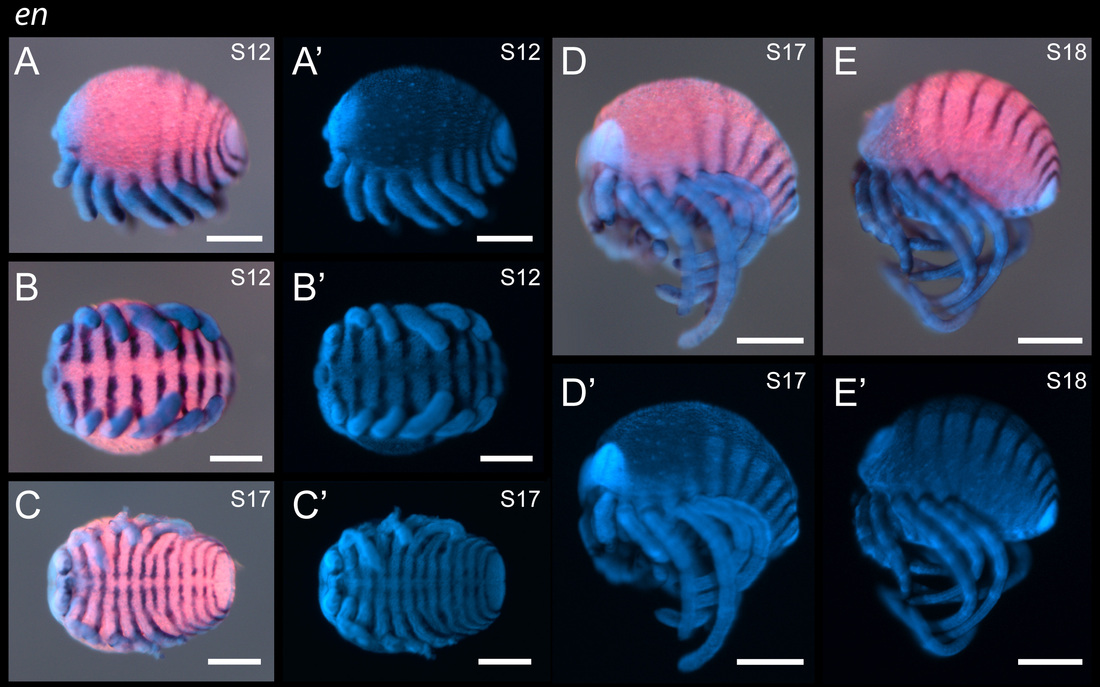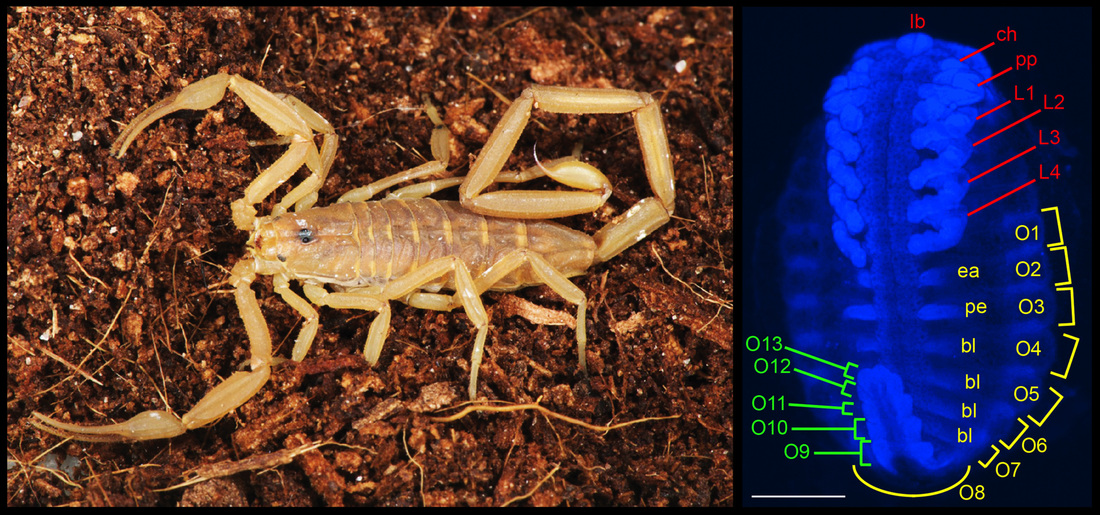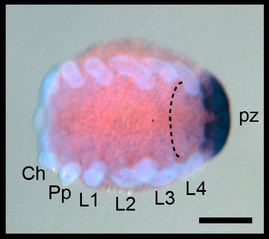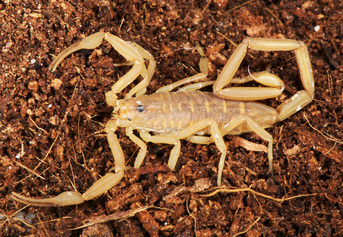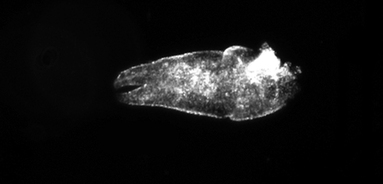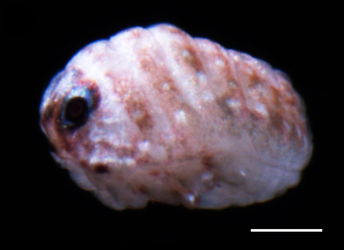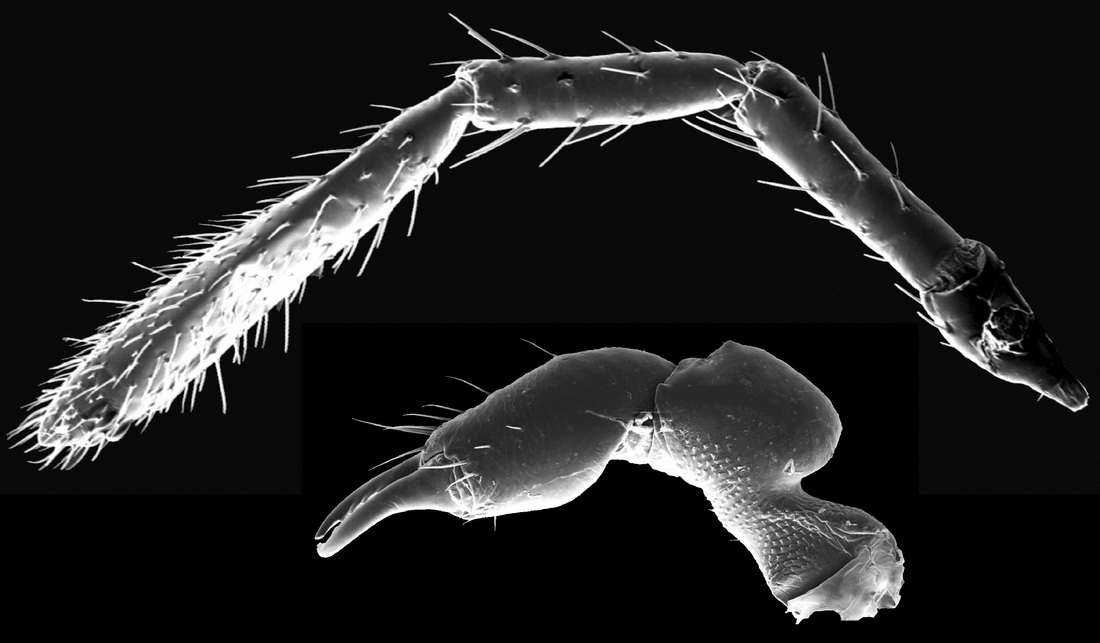Evolutionary developmental biology
The eupnoid harvestman Phalangium opilio is a relatively large species with a broad temperate distribution and lays multiple, large clutches of synchronously developing eggs. These qualities make this species an excellent choice for study of development.
In collaboration with Dr. Evelyn E. Schwager and Prof. Cassandra G. Extavour, gene expression protocols have been optimized for study of embryonic development in the harvestman. Below are images of harvestman embryos, indicating expression domains (in black) of the segment polarity gene engrailed.
More recent work encompasses the development of another non-model arachnid, the buthid scorpion Centruroides sculpturatus.
Specific projects
For more information, click any image below.
|
(1) Harvestman Hox genes
|
(2) Scorpion Hox genes
|
|
(3) Evolution of cheliceral segmentation
|
(4) RNAi in Phalangium opilio
|

